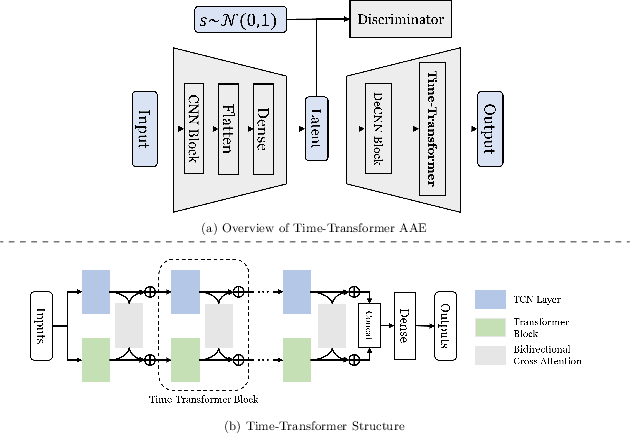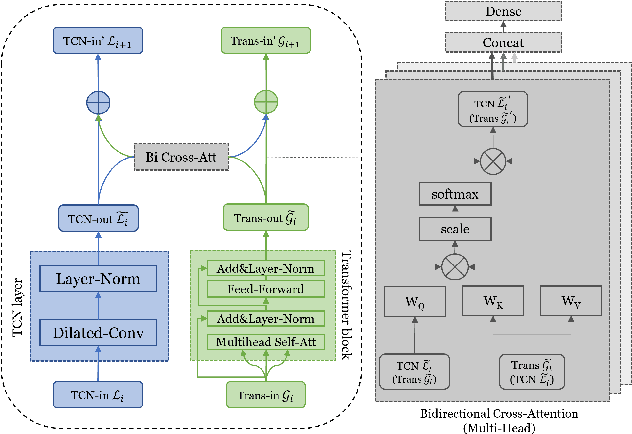Christofer Bester
Stochastic Diffusion: A Diffusion Probabilistic Model for Stochastic Time Series Forecasting
Jun 05, 2024Abstract:Recent innovations in diffusion probabilistic models have paved the way for significant progress in image, text and audio generation, leading to their applications in generative time series forecasting. However, leveraging such abilities to model highly stochastic time series data remains a challenge. In this paper, we propose a novel Stochastic Diffusion (StochDiff) model which learns data-driven prior knowledge at each time step by utilizing the representational power of the stochastic latent spaces to model the variability of the multivariate time series data. The learnt prior knowledge helps the model to capture complex temporal dynamics and the inherent uncertainty of the data. This improves its ability to model highly stochastic time series data. Through extensive experiments on real-world datasets, we demonstrate the effectiveness of our proposed model on stochastic time series forecasting. Additionally, we showcase an application of our model for real-world surgical guidance, highlighting its potential to benefit the medical community.
Time Series Representation Learning with Supervised Contrastive Temporal Transformer
Mar 16, 2024Abstract:Finding effective representations for time series data is a useful but challenging task. Several works utilize self-supervised or unsupervised learning methods to address this. However, there still remains the open question of how to leverage available label information for better representations. To answer this question, we exploit pre-existing techniques in time series and representation learning domains and develop a simple, yet novel fusion model, called: \textbf{S}upervised \textbf{CO}ntrastive \textbf{T}emporal \textbf{T}ransformer (SCOTT). We first investigate suitable augmentation methods for various types of time series data to assist with learning change-invariant representations. Secondly, we combine Transformer and Temporal Convolutional Networks in a simple way to efficiently learn both global and local features. Finally, we simplify Supervised Contrastive Loss for representation learning of labelled time series data. We preliminarily evaluate SCOTT on a downstream task, Time Series Classification, using 45 datasets from the UCR archive. The results show that with the representations learnt by SCOTT, even a weak classifier can perform similar to or better than existing state-of-the-art models (best performance on 23/45 datasets and highest rank against 9 baseline models). Afterwards, we investigate SCOTT's ability to address a real-world task, online Change Point Detection (CPD), on two datasets: a human activity dataset and a surgical patient dataset. We show that the model performs with high reliability and efficiency on the online CPD problem ($\sim$98\% and $\sim$97\% area under precision-recall curve respectively). Furthermore, we demonstrate the model's potential in tackling early detection and show it performs best compared to other candidates.
Time-Transformer: Integrating Local and Global Features for Better Time Series Generation
Dec 18, 2023



Abstract:Generating time series data is a promising approach to address data deficiency problems. However, it is also challenging due to the complex temporal properties of time series data, including local correlations as well as global dependencies. Most existing generative models have failed to effectively learn both the local and global properties of time series data. To address this open problem, we propose a novel time series generative model named 'Time-Transformer AAE', which consists of an adversarial autoencoder (AAE) and a newly designed architecture named 'Time-Transformer' within the decoder. The Time-Transformer first simultaneously learns local and global features in a layer-wise parallel design, combining the abilities of Temporal Convolutional Networks and Transformer in extracting local features and global dependencies respectively. Second, a bidirectional cross attention is proposed to provide complementary guidance across the two branches and achieve proper fusion between local and global features. Experimental results demonstrate that our model can outperform existing state-of-the-art models in 5 out of 6 datasets, specifically on those with data containing both global and local properties. Furthermore, we highlight our model's advantage on handling this kind of data via an artificial dataset. Finally, we show our model's ability to address a real-world problem: data augmentation to support learning with small datasets and imbalanced datasets.
 Add to Chrome
Add to Chrome Add to Firefox
Add to Firefox Add to Edge
Add to Edge